We had a great upbringing as kids. We were poor but we had clean clothes, all second-hand … . But we always had plenty of food and loving parents which was extremely important, something that a lot of kids haven’t got these days.
Mike Scott talking about his childhood in the 1950s and 60s
With the reclamation of the shoreline and the development of New Wharf in the 1830s, Montpelier Retreat became home to a close-knit working class community. They worked around the waterfront, had little money and large families.
We had a lot of friends in the street … We were called ‘Dead End’ kids, the underclass to a lot of people. The other side of Parliament Square thought we were all bad people, all criminals. … We used to play in the laneways along Salamanca Place. We’d play on the fire escapes … swing up and down on these great metal steps … Then someone would come and say ‘Get away, off you go!’ So we’d jump off and run away and find another one.
– Mike Scott
Despite the poverty, people pulled together. Widowed at 40 with 7 children
Mum always had a halfway house … She would take anybody in, anybody that was down and out … She would put them up overnight. Even some of the old winos who used to be in Franklin Square sleeping on a bench … Mum wouldn’t see anyone without a bed. … She would put them up and if she had any spare cash at all, she’d try and help them out with something. Our Mum would give you the last cent from her purse.
– Mike Scott
… We used to swim around there too – it was all part of our playground. We used to do a lot of swimming around Secheron. There were some old cement bags in the water off there and we used to dive off them.
Listen
We used to walk around the slipyards all the time – watch them build boats, it was fascinating.
We would sit there watching them build boats at Mures … And old Sharkey Taylor and Featherstone’s.
We used to swim around there too – it was all part of our playground. We used to do a lot of swimming around Secheron. There were some old cement bags in the water off there and we used to dive off them. …
The other thing we used to love doing on the waterfront when we were kids – we’d love to go down when the May Queen and other ketches were unloading timber. We’d sit on the stacks watching them unload and they’d say ‘Come on – move on to the next one, you boys. We’ve gotta load more on that one …’ It was fascinating watching them unload timber from Dover … Chestermans had it then, it was where the May Queen is now.
When the fishing boats came in with couta, there would be a lot of people lining up – there were a lot of poor families who lined up for the couta … The couta with the worms were the best ones! You always asked for worms!
We used to get sent down to the wharf for fish – pink couta. We used to take a billy down to get split scallops. I can still remember 8 shillings for 100 scallops. They were beautiful big scallops and they used to give us extra as we were family … We used to eat them raw on the way home. The fishing boats used to sell them as well.
– Mike Scott talking about his childhood in the 1950s

Looking down Montpelier Retreat toward Salamanca Place c1920s
The centre and left hand buildings were the first buildings in Montpelier Retreat.
Source
Tasmanian Archive and Heritage Office PH 30 1 4730
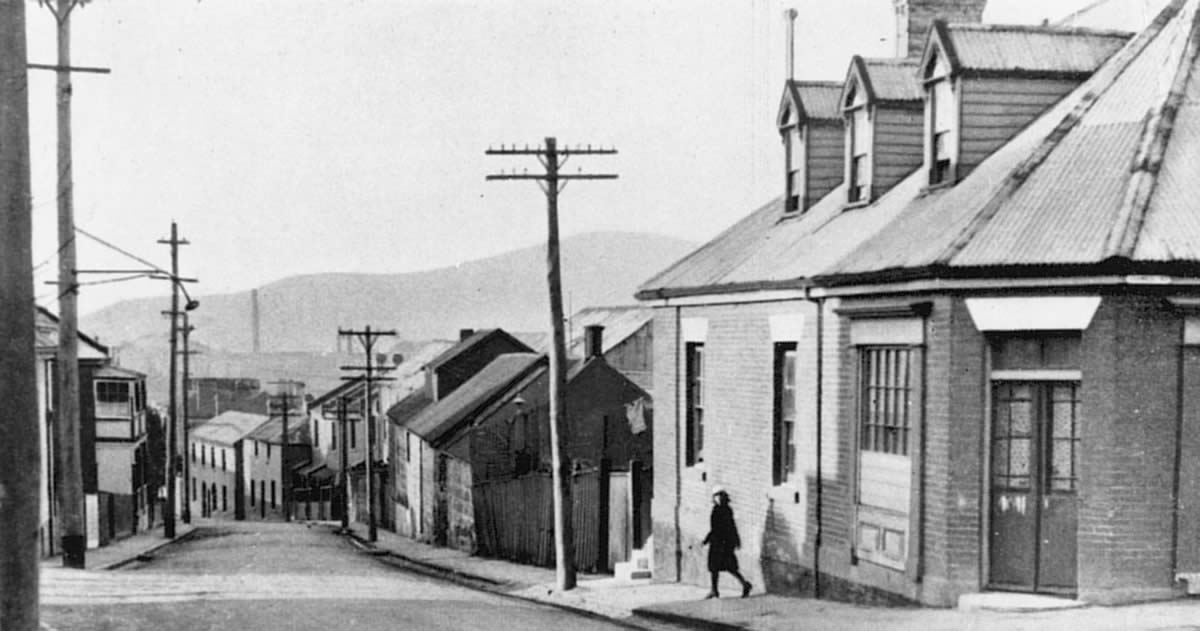
Montpelier Retreat c1943
We had big community bonfires – the Campbells had a big bonfire in their yard further down the street… We loved going down there.
– Jan Scott talking about her childhood in the 1950s and 60s
Source
Colin Dennison Collection
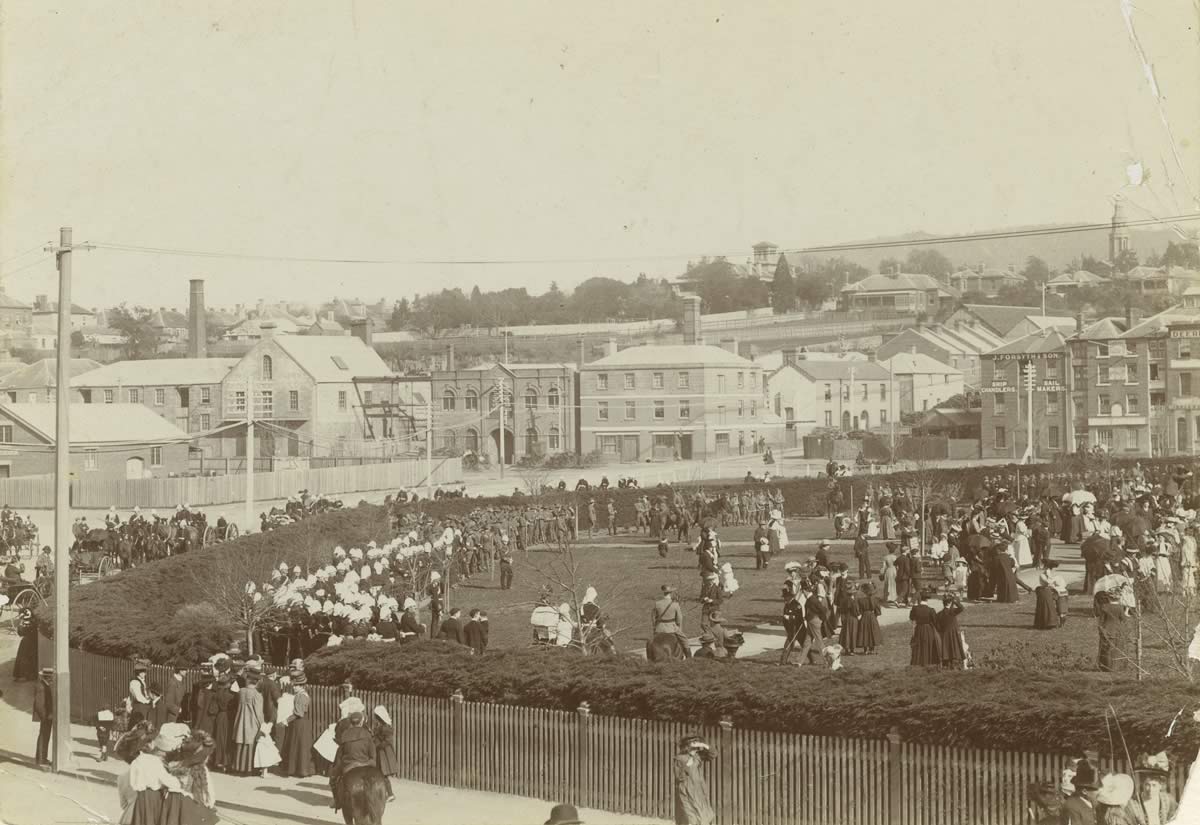
Whaler’s Return, now The Whaler, and 2 Montpelier Retreat early 1900s
Note the arched doorway is still visible today. This was the home of Philadelphia Flynn, local midwife, at the turn of the 20th century.
Source
Tasmanian Archive and Heritage Office Detail from 30 6681
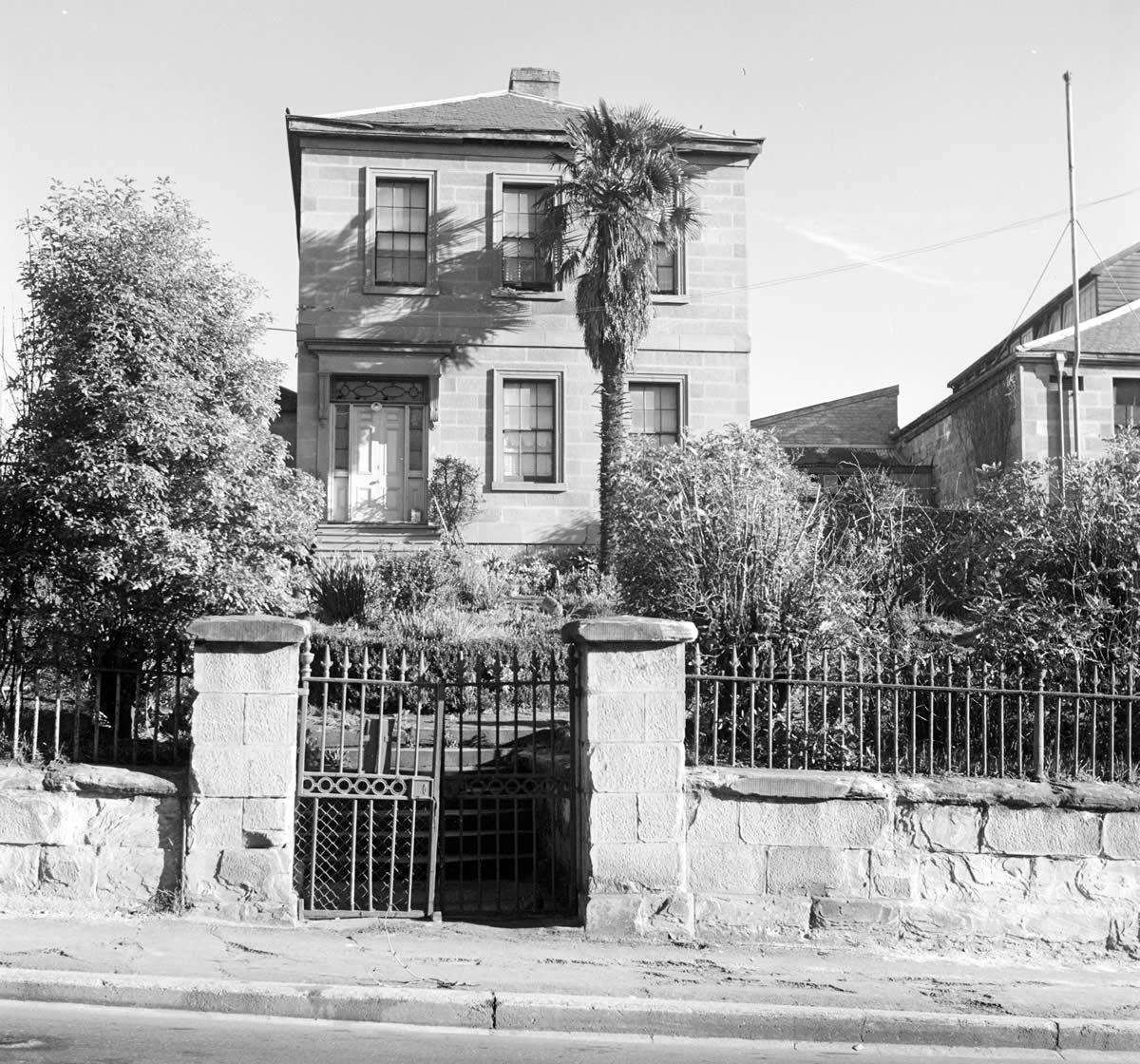
Alexander Orr’s original house
Orr was a merchant and his original store still stands as part of Galleria Salamanca to the right.
Source
Tasmanian Archive and Heritage Office (Jack Thwaites Collection) Montpelier Retreat NS3195 1 1238

Archaeological excavation in Montpelier Retreat 2015
The upper foundation footprint in the image is all that remains of Alexander Orr’s house in 2015. The middle ground reveals a part of a substantial Aboriginal midden.
Photo
Robert Vincent
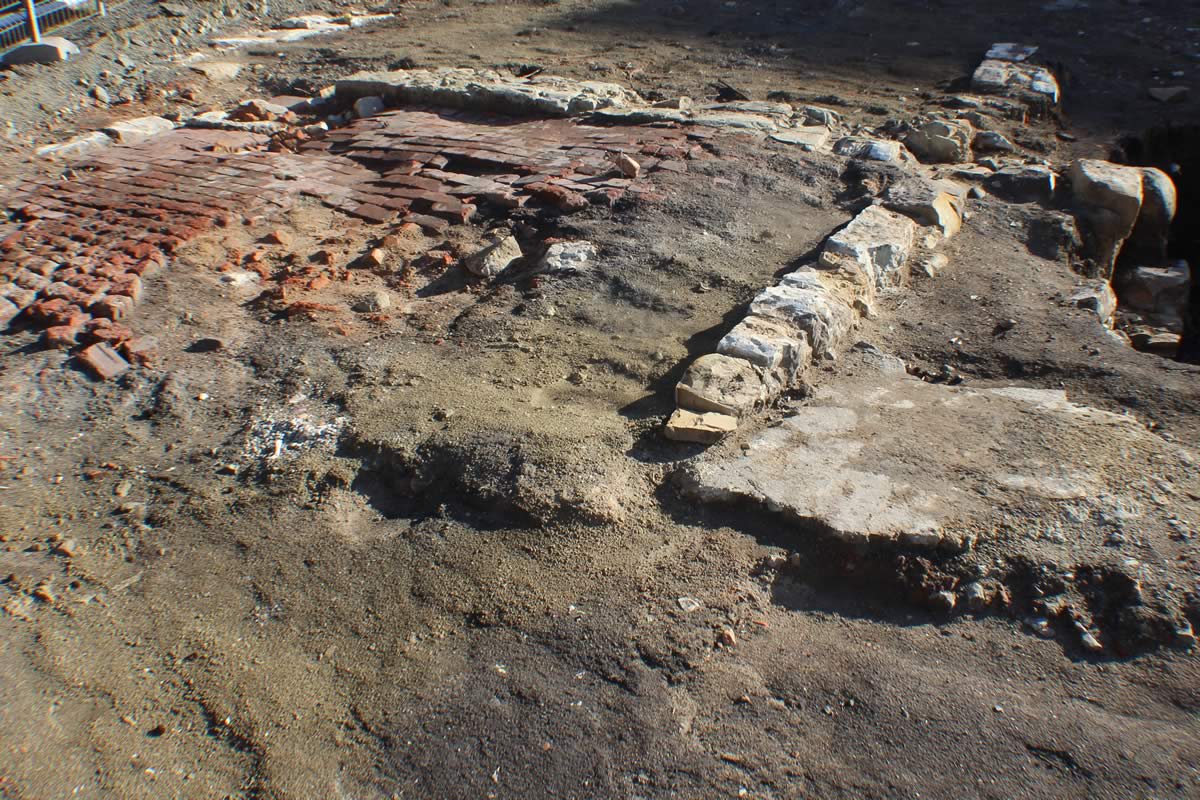
Excavation site of the Scott family home and grocery store, corner of Montpelier Retreat and Kirksway Place 2015
Mrs Scott ran the store to help support her family of seven children after her husband was injured on the waterfront and no longer able to work.
I just wish our house was still there. It’s a different feeling going into a house that is old.
– Mike Scott talking about his childhood in the 1950s and 60s
Photo
Robert Vincent
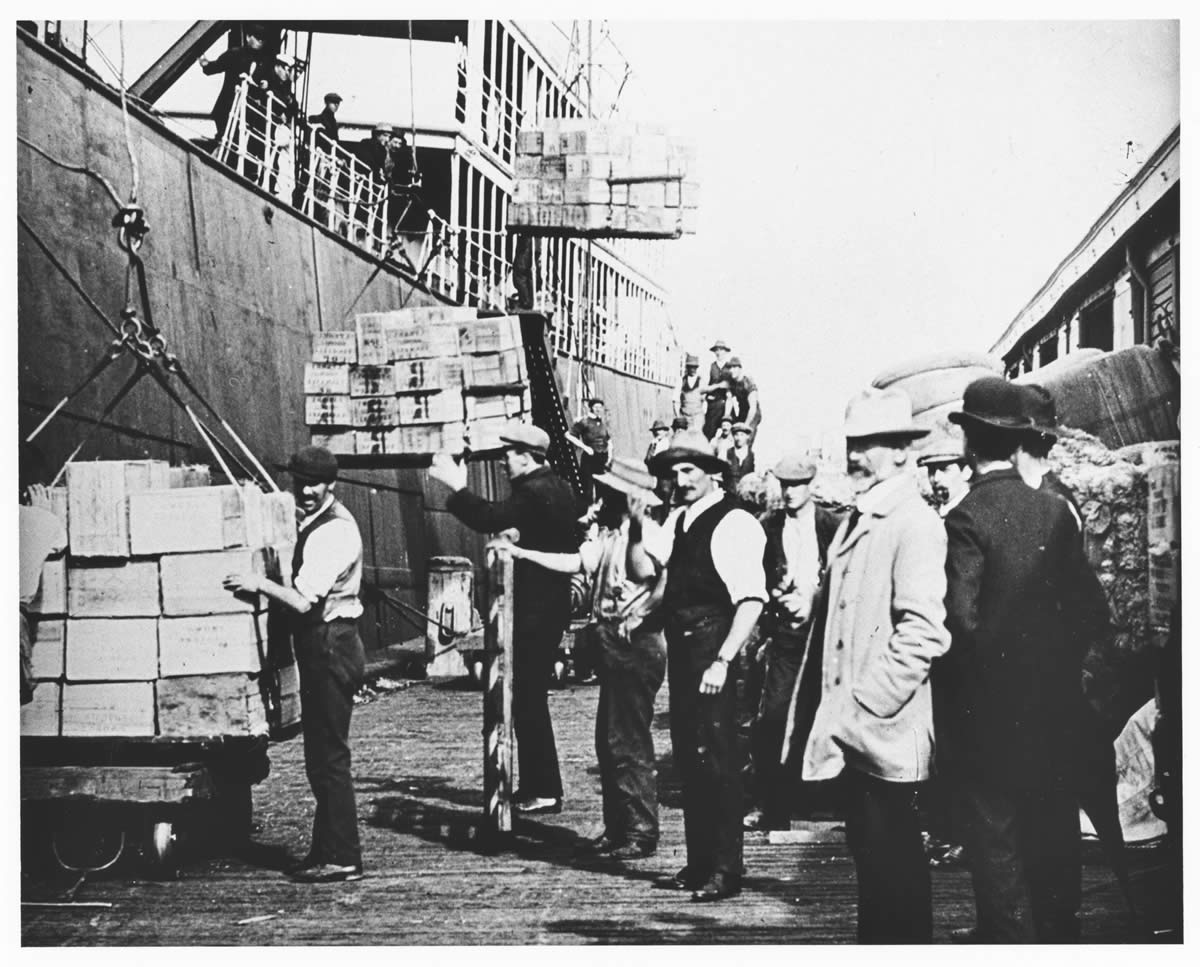
Apple boxes being loaded on the Hobart waterfront c1940s
Dad was a member of the Communist Party – most of the wharfies were. He was also in the Waterside Workers Union… They used to do very dangerous work. The shipowners didn’t care about safety, it was “profits before people”.
– Mike Scott talking about his childhood in the 1950s and 60s
Source
Tasmanian Archive and Heritage Office PH30 1 1914 2
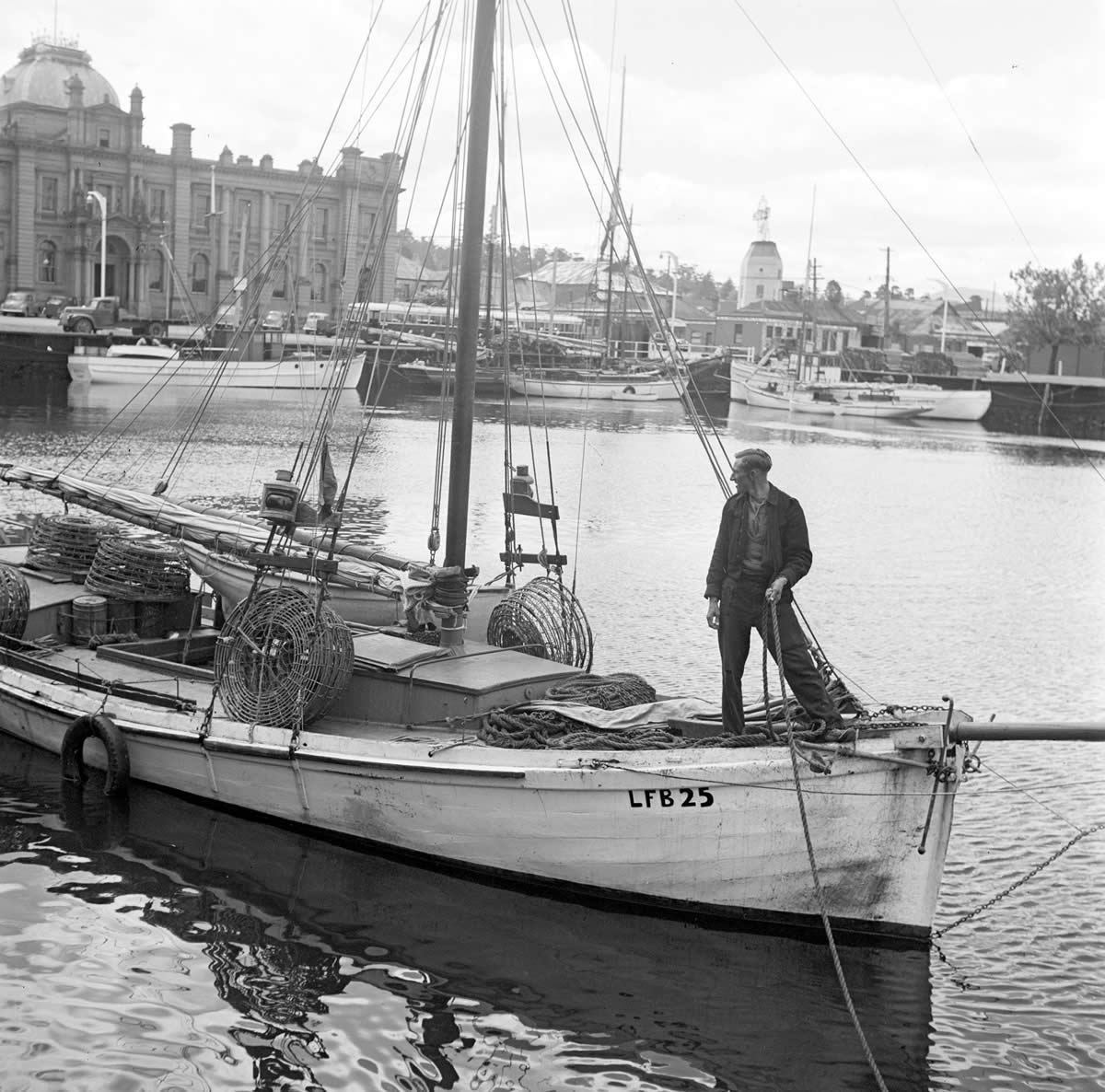
Fishing boat in Constitution Dock 1950s – Hobart wharves
We used to get sent down to the wharf to buy fish – pink couta… We also used to take a billy down to get the split scallops.
– Mike Scott talking about his childhood in the 1950s and 60s
Source
Tasmanian Archive and Heritage Office (Jack Thwaites Collection) NS3195 1 556
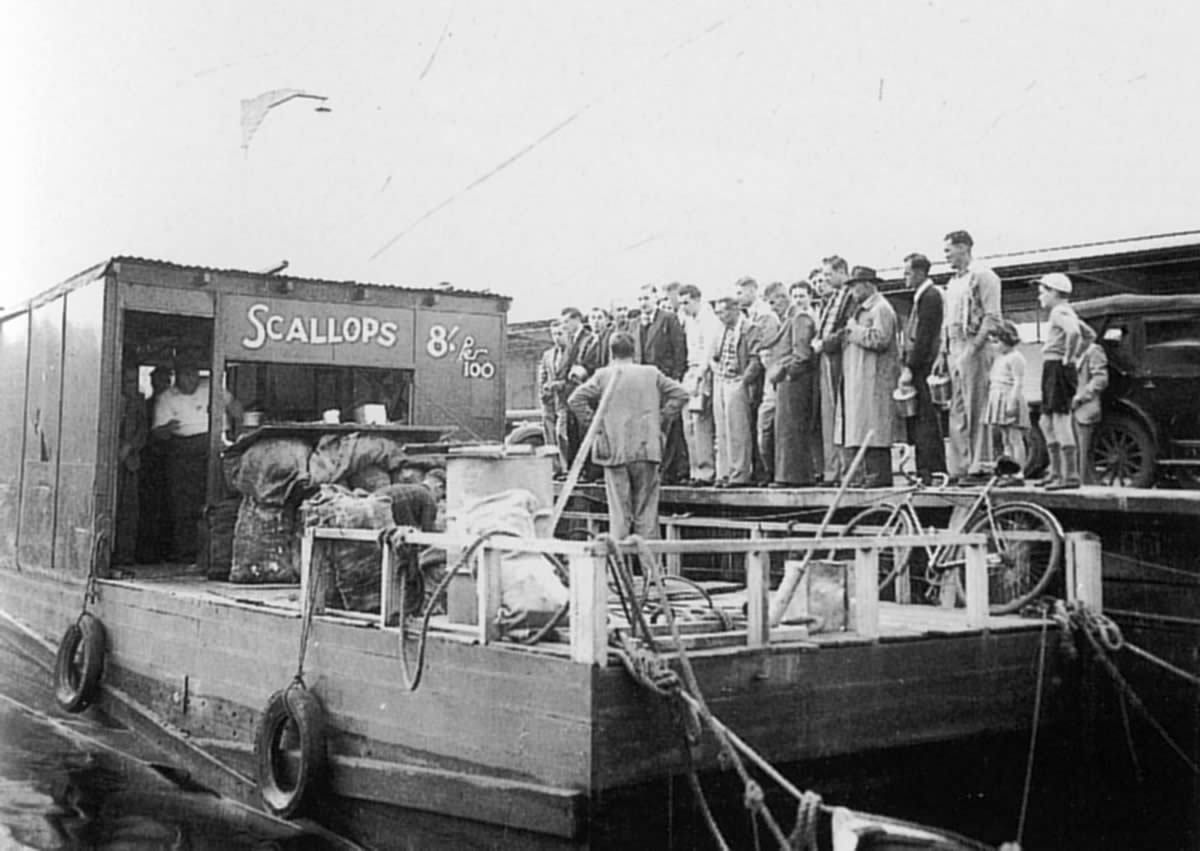
Fish punt in Constitution Dock 1950s
I can remember 8 shillings for 100 scallops… Beautiful big scallops and they used to give us extra as we were family… We used to eat them raw on the way home.
– Mike Scott talking about his childhood in the 1950s and 60s
Source
Colin Dennison Collection
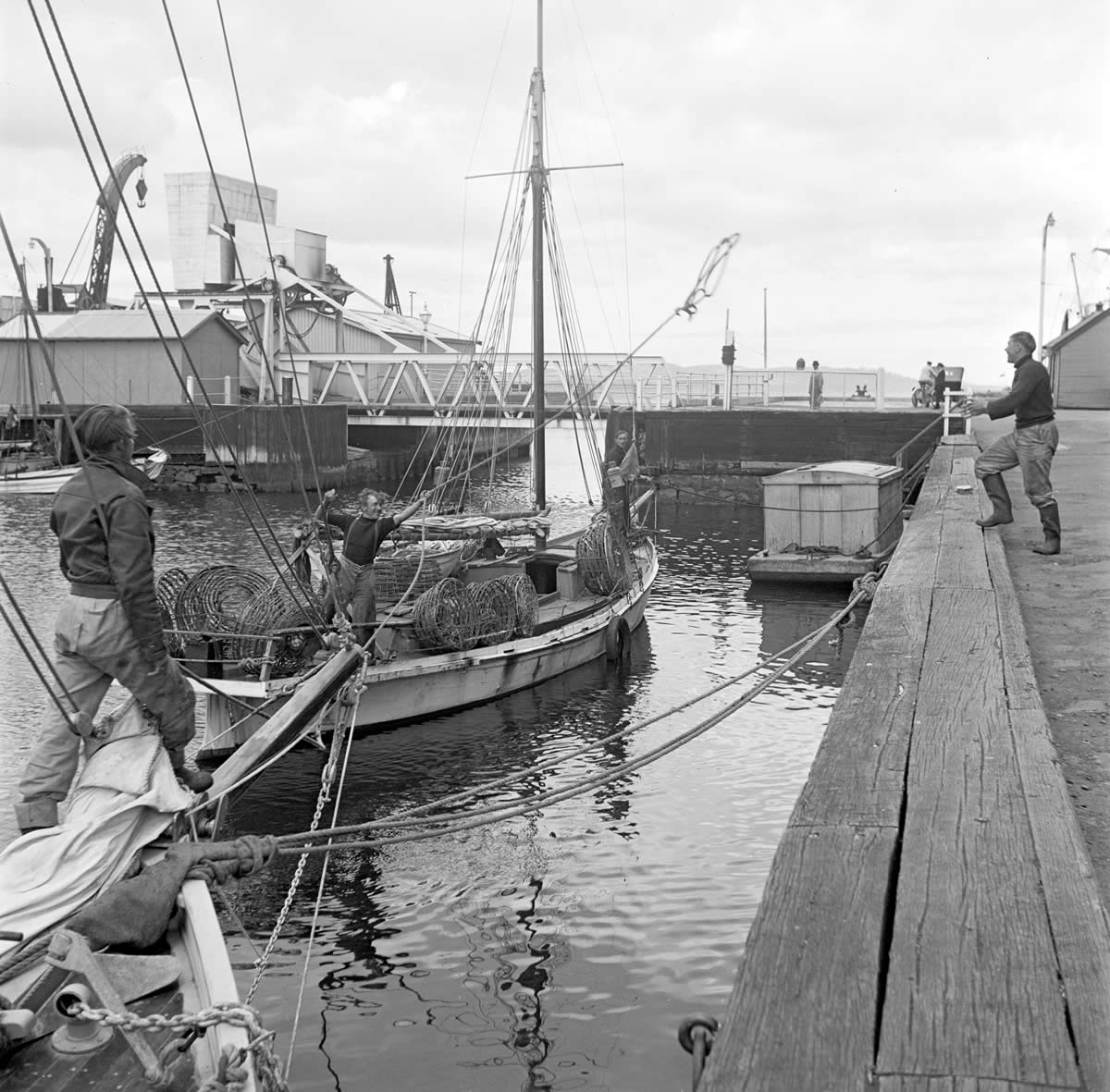
Bascule Bridge Constitution Dock – Hobart wharves
My father had a job at the Marine Board as a Petty Officer. He used to operate the bridge, you know, through Constitution Dock. All the little boats would come in and out… Press the button, it goes up. Press the button, it comes down.
– Lyn Bluett talking about his childhood in the 1950s
Source
Tasmanian Archive and Heritage Office (Jack Thwaites Collection) NS3195 1 554
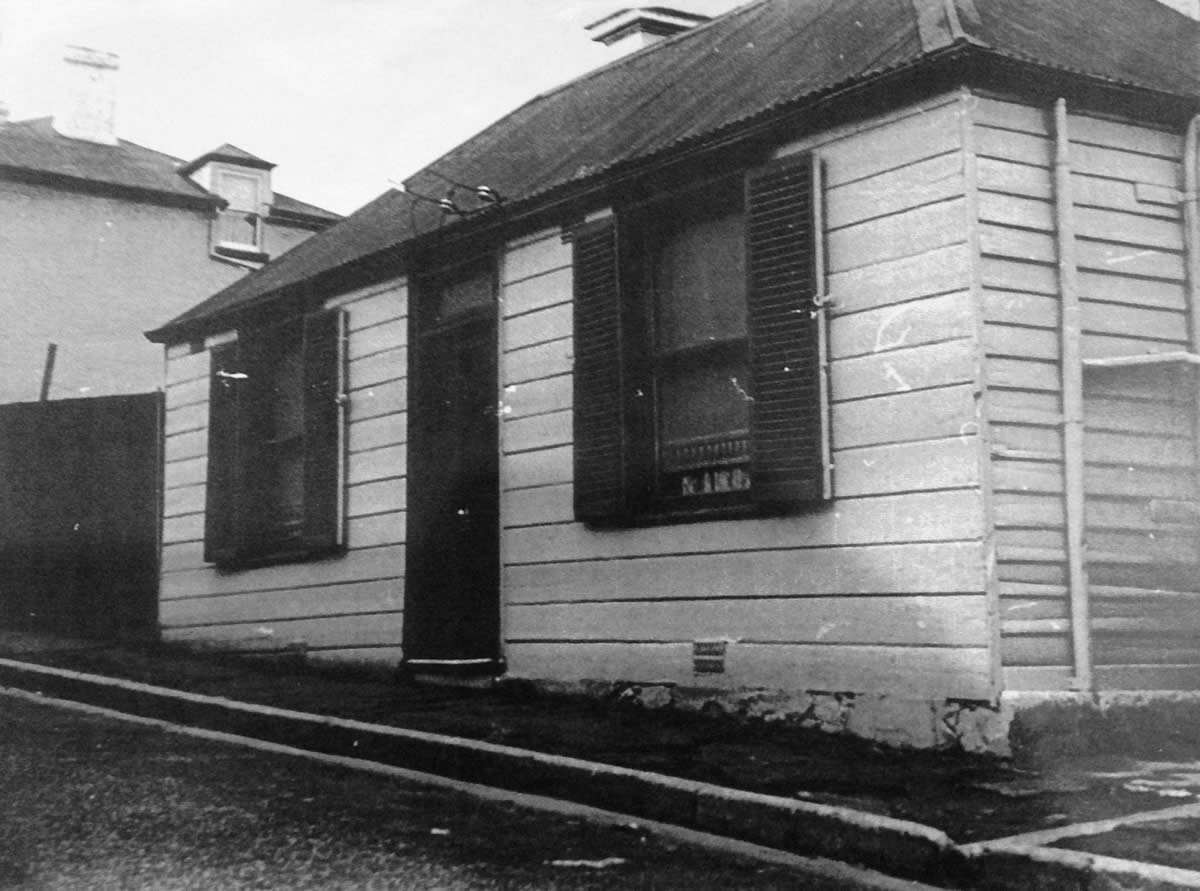
Four roomed timber cottage in Knopwood Street, demolished in the 1960s
Mike Scott fondly remembers his grandparents living in this house in Knopwood Street, just across Montpelier Retreat and two doors up from the family shop.
Source
Colin Dennison Collection

Corner of Montpelier Retreat and Hampden Road c1860s
The fountain and water supply were reticulated to this point in 1833 from the Cascades. The water supply was extended down Montpelier Retreat to New Wharf to resupply ships, now Salamanca Place. Portsea Place is in the middle foreground with Narryna, Stowell and Prince of Wales Hotel to the rear along Hampden Road.
Source
Tasmanian Museum and Art Gallery Q2001.15.7.16

Portsea Terrace on the corner of Montpelier Retreat and Hampden Road 1969
Source
Colin Dennison Collection
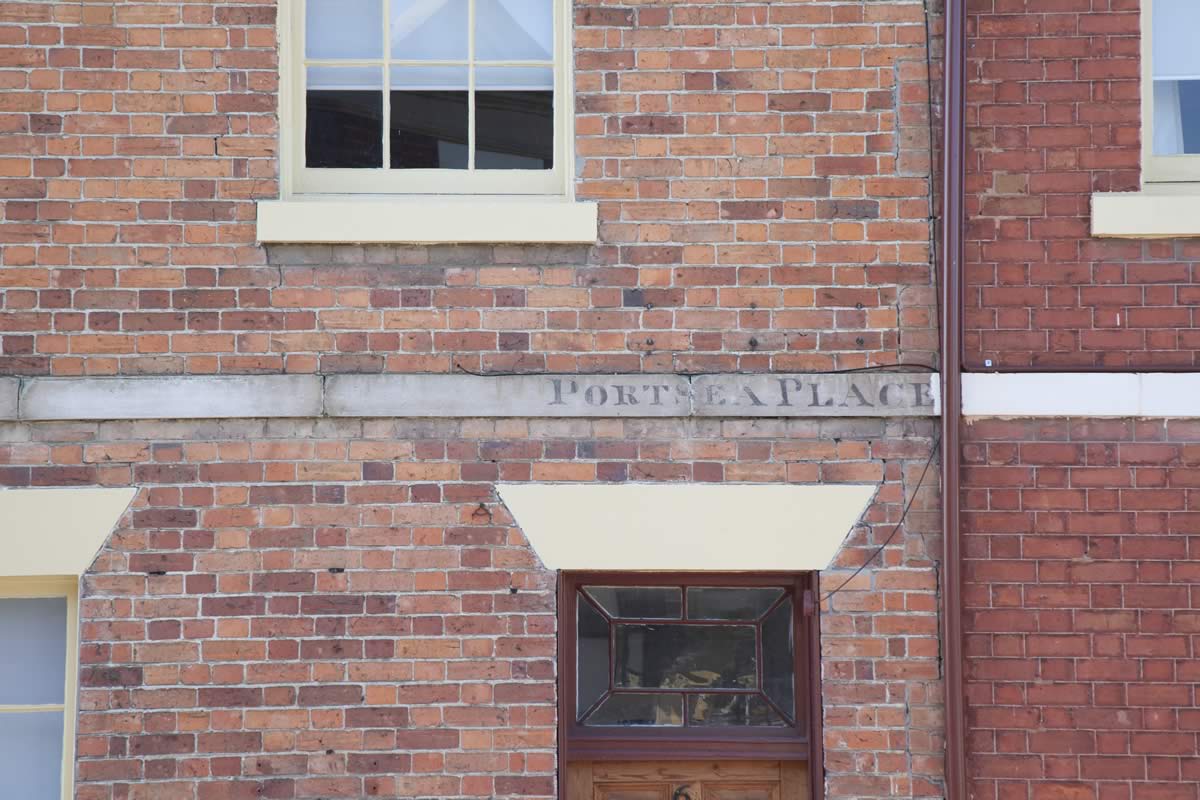
Portsea Terrace 2015
Today Portsea Terrace remains as a well preserved example of two-storey Georgian style townhouses.
